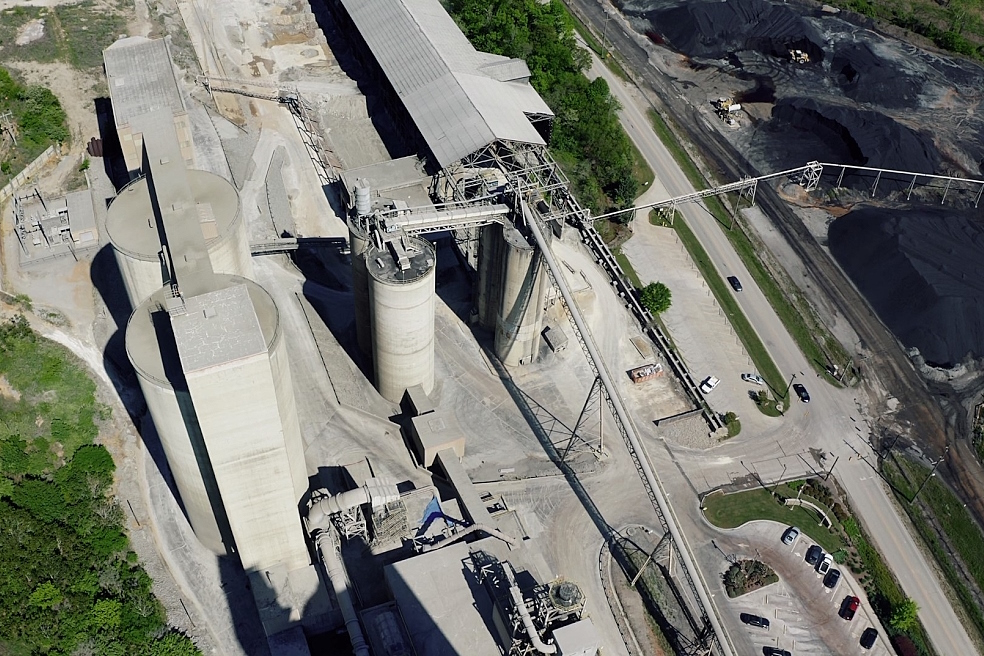Despite bright market prospects, the pivotal role of competent project financing cannot be overstated. Financing of cement plants in USA demand substantial capital infusion for construction, modernization, and expansion. As traditional sources of funding evolve, the sector has recognized the significance of diversifying financing strategies. Project finance instruments, in particular, offer essential support, enabling companies to access necessary resources efficiently.
The recent landscape of construction industry, investments and financing of cement plants in the USA is in transition and evolution transformation, which is associated with distinctive strategic approaches and forward-looking initiatives.
The year 2022 witnessed a resilient trajectory despite challenges, with the sector continuing to attract strategic investments.
Cement production reached an estimated 370 million metric tons, underscoring the sector’s robustness.
Furthermore, the involvement of angel investors has proven to be a game-changer. Long-term loans issued by private investors and investment funds bring stability and flexibility to funding schemes.
Are you looking for funds to finance your cement plant project in the USA and other parts of the world? contact US
Our company specializes in pragmatic financial strategies tailored to your needs. With a proven track record, we offer comprehensive support for constructing, expanding, and modernizing cement plants. Our range of services includes international project financing, assistance in obtaining long-term loans from private investors and investment funds, financial engineering, consulting, and more.
Financing the construction of cement plants in the USA
The process of securing financing for cement plant construction is similar to financing for large-scale infrastructure projects.
Financing of cement plants in the USA typically involves a combination of sources, including equity, debt, and internal funds.
Equity financing: The equity financing provides the initial capital required for project development. Cement companies in the USA often attract capital by selling shares or equity stakes in their company. Institutional investors, private equity firms, and individual investors may participate in this process.
Internal funds: Many existing cement companies in the USA use their own retained earnings and internal funds to finance expansion or new cement plant construction. This approach reduces the reliance on external financing and minimizes the impact on existing shareholders.
Project Finance (PF): Project finance is a specialized form of financing where the project itself serves as collateral for the loans. In this structure, lenders assess the feasibility and potential cash flows of the specific project to determine the loan terms.
Debt financing: Debt financing (lending) involves borrowing money from various sources to fund the construction of cement plants. This can include loans from banks, financial institutions, and bonds issued in the capital markets.
Joint ventures and partnerships: Cement companies might form joint ventures or partnerships with other companies or investors to share the financial burden of constructing new plants in the USA and other countries across the region. This can also bring in expertise and resources from multiple parties.
International financial institutions: International financial institutions such as the World Bank, Asian Development Bank, and others might provide financing for important projects in developing countries like India. These institutions often prioritize projects that contribute to economic growth and sustainable development.
Public-Private Partnerships (PPPs): Some cement plant projects in India might be developed under PPP models, where the public and private sectors collaborate to fund and manage the project. The government might provide the land and regulatory support, while private companies bring in financing and expertise.
It’s essential for cement companies to conduct thorough feasibility studies, financial projections, and risk assessments before seeking financing.
Investments in the modernization of cement plant
Several large cement companies in USA have invested in advanced technologies and equipment to achieve these goals. However, the current modernization trends also cover organizational measures, including an increase in the efficiency of production process management.
Modernization of the United states cement plants has been an ongoing process to improve efficiency, reduce environmental impact, and enhance production capacity.
Financing of cement plants in USA faces several challenges and issues that have impacted its growth.
- stringent environmental regulations require cement plants to adopt cleaner technologies and reduce emissions.
- the sector faces challenges related to energy costs and availability. Modernization and adoption of energy-efficient technologies are crucial to address these issues.
- poor infrastructure and transportation bottlenecks can hinder supply chains.
The following are some important areas of Financing of cement plants in USA
• Energy efficiency improvements. Modernization efforts often focus on improving energy efficiency through measures like waste heat recovery systems, efficient kiln designs, and advanced process control systems.
• Green cement technologies. Some companies are investing in research and development of green cement technologies that have lower carbon emissions and use sustainable materials.
• Alternative Fuels and Raw Materials (AFR). Many Indian cement plants have adopted the use of alternative fuels and raw materials, such as waste-derived fuels, biomass, and fly ash, to reduce reliance on traditional fossil fuels and decrease carbon emissions.
• Environmental control systems. Installation of advanced pollution control systems like electrostatic precipitators, bag filters, and flue gas desulfurization units to comply with environmental regulations.
The government and the cement industry itself have been taking steps to address many of these challenges through initiatives like the “National Action Plan for Climate Change,” promoting sustainable practices, investing in research and development, and encouraging collaborations among industry stakeholders.
We offer long-term investment loans as well as project finance solutions and consulting services. If you are seeking financing solutions for cement plants.
eMAIL:[email protected]
Website:https://viola-funding.com/
